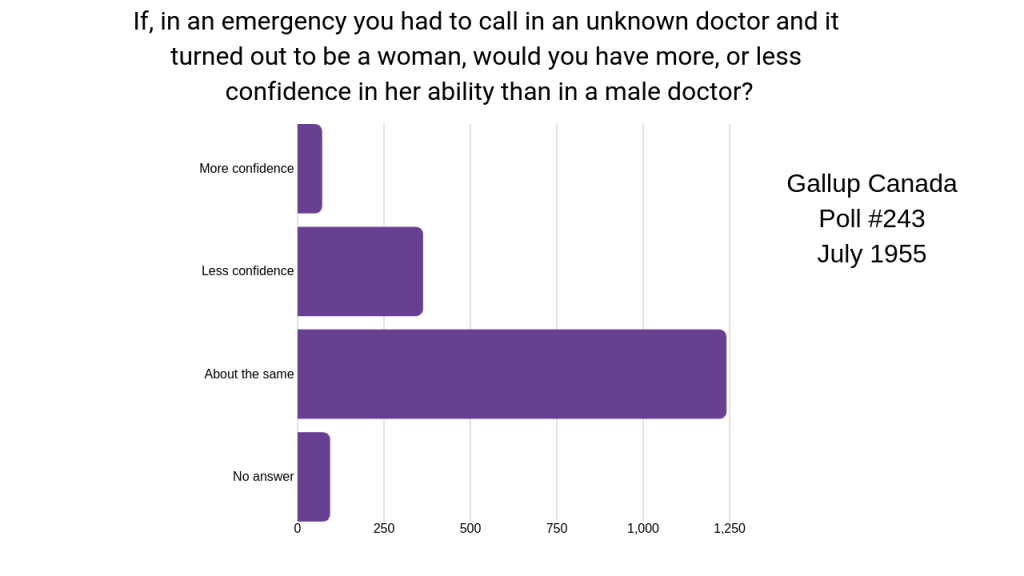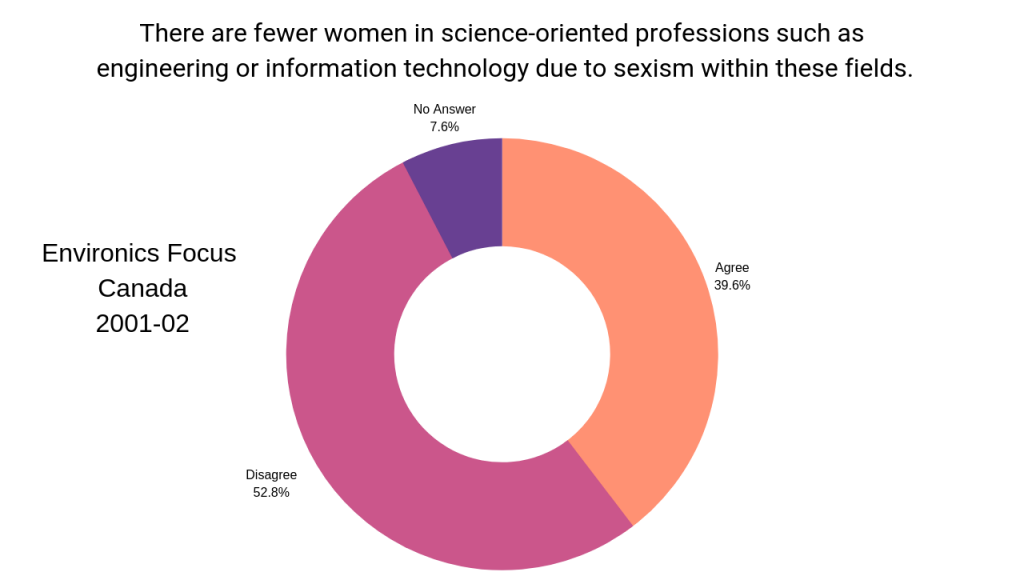March 8 is International Women’s Day, and we’re featuring books and datasets on women in science.
You can also view our March 2017 featured topic for women’s history month.
Books
 | Smitten by giraffe: my life as a citizen scientist
Dagg, Anne Innis McGill-Queen’s University Press, 2016 Boldly documenting widespread sexism in Canadian universities while also discussing Dagg’s involvement with important zoological topics such as homosexuality, infanticide, sociobiology, and taxonomy, Smitten by Giraffe offers an inside perspective on the workings of scientific research and debate, the history of Canadian academia, and the rise of second-wave feminism. |
 |
Women in the Geosciences: Practical, Positive Practices Toward Parity
Holmes, Mary Anne; OConnell, Suzanne; Dutt, Kuheli John Wiley & Sons, 2015 The geoscience workforce has a lower proportion of women compared to the general population of the United States and compared to many other STEM fields. This volume explores issues pertaining to gender parity in the geosciences, and sheds light on some of the best practices that increase participation by women and promote parity. |
 |
Breaking into the Lab: Engineering Progress for Women in Science
Rosser, Sue V. New York University Press, 2012 Why are there so few women in science? This book uses the experiences of successful women scientists and engineers to answer the question of why elite institutions have so few women scientists and engineers tenured on their faculties. Women are highly qualified, motivated students, and yet they have drastically higher rates of attrition, and they are shying away from the fields with the greatest demand for workers and the biggest economic payoffs, such as engineering, computer sciences, and the physical sciences. The book shows that these continuing trends are not only disappointing, they are urgent: the U.S. can no longer afford to lose the talents of the women scientists and engineers, because it is quickly losing its lead in science and technology. Ultimately, these biases and barriers may lock women out of the new scientific frontiers of innovation and technology transfer, resulting in loss of useful inventions and products to society. |
 |
Gender equity in science and engineering: advancing change in higher education
Bilimoria, Diana; Liang, Xiangfen Routledge, 2012 Women faculty’s participation in academic science and engineering is critical for future US global competitiveness, yet their underrepresentation particularly in senior positions remains a widespread problem. To overcome persistent institutional resistance and barriers to change, the NSF ADVANCE institutional transformation initiative, instituted in 2001, seeks to increase the workforce participation of women faculty in academic science and engineering through systematic institutional transformation. This book assesses the equity, diversity and inclusion outcomes of the changes underway at 19 universities. It provides a comprehensive, stand-alone description of successful approaches to increase the recruitment, advancement and retention of women faculty throughout the academic career pipeline. The findings show that targeted institutional transformation at these 19 U.S. universities has resulted in significant increases in women faculty’s workforce participation, as well as improved gender equity and inclusion. Analyses by discipline show that the greatest changes have occurred within engineering and natural science disciplines at these universities. Yet the results also point to the overall continued underrepresentation of women faculty in academic science and engineering at the nation’s research universities. A framework of organizational change is derived to serve as a template to academic and other organizations seeking transformation to enhance gender equity, diversity and inclusion. |
 |
Gender Codes: Why Women are Leaving Computing
Misa, Thomas J. John Wiley & Sons, 2010 The computing profession faces a serious gender crisis. Today, fewer women enter computing than anytime in the past 25 years. This book provides an unprecedented look at the history of women and men in computing, detailing how the computing profession emerged and matured, and how the field became male coded. Women’s experiences working in offices, education, libraries, programming, and government are examined for clues on how and where women succeeded—and where they struggled. |
 |
The bold and the brave: a history of women in science and engineering
Frize, Monique; Faulkner, Nadine; Frize, Peter R. D. University of Ottawa Press, 2009 The Bold and the Brave investigates how women have striven throughout history to gain access to education and careers in science and engineering. Author Monique Frize, herself an engineer for over 40 years, introduces the reader to key concepts and debates that contextualize the obstacles women have faced and continue to face in the fields of science and engineering. She focuses on the history of women’s education in mathematics and science through the ages, from antiquity to the Enlightenment. While opportunities for women were often purposely limited, she reveals how many women found ways to explore science outside of formal education. The book examines the lives and work of three women -Sophie Germain, Mileva Einstein, and Rosalind Franklin – that provide excellent examples of how women’s contributions to science have been dismissed, ignored or stolen outright. She concludes with an in-depth look at women’s participation in science and engineering throughout the twentieth century and the current status of women in science and engineering, which has experienced a decline in recent years. To encourage more young women to pursue careers in science and engineering she advocates re-gendering the fields by integrating feminine and masculine approaches that would ultimately improve scientific and engineering endeavours. |
 |
Women, science, and technology: a reader in feminist science studies
Wyer, Mary Routledge, 2008 Women, Science, and Technology is an ideal reader for courses in feminist science studies. This third edition fully updates its predecessor with a new introduction and twenty-eight new readings that explore social constructions mediated by technologies, expand the scope of feminist technoscience studies, and move beyond the nature/culture paradigm. |
 |
Success strategies for women in science: a portable mentor
Pritchard, Peggy A. Elsevier Academic Press, 2006 Success Strategies for Women in Science: A Portable Mentor focuses on a wealth of knowledge and years of experience of successful female scientists from industry, government, research institutes, and academe. This book, through practical advice and real-life stories, presents what knowledge and skills are needed to make the transition from trainee to scientist that, if practiced, will help beginners become successful. This book, in particular, describes the essential skills required of every researcher, such as networking, communicating, coping with the demands of a research career, time management, and the most difficult of skills, saying “”no”” to excessive demands on time. This text also explores the issues relating to career development and the importance of the examination of alternate career paths. While much of the advice in this mentoring manual is aimed at women new in their careers, experienced readers will also find the book of value. This material will fill the gap and help women to pursue excellence and achieve success in their chosen scientific careers. |
 |
Women and Information Technology: Research on Underrepresentation
Cohoon, Joanne; Aspray, William MIT Press, 2006 Computing remains a heavily male-dominated field even after twenty-five years of extensive efforts to promote female participation. The chapters in this book look at reasons for the persistent gender imbalance in computing and explore some strategies intended to reverse the downward trend. The studies included are rigorous social science investigations; they rely on empirical evidence — not rhetoric, hunches, folk wisdom, or off-the-cuff speculation about supposed innate differences between men and women. Taking advantage of the recent surge in research in this area, the book presents the latest findings of both qualitative and quantitative studies. Each section begins with an overview of the literature on current research in the field, followed by individual studies. The first section investigates the relationship between gender and information technology among preteens and adolescents, with each study considering what could lead girls’ interest in computing to diverge from boys’; the second section, on higher education, includes a nationwide study of computing programs and a cross-national comparison of computing education; the final section, on pathways into the IT workforce, considers both traditional and nontraditional paths to computing careers. |
 |
On Her Own Terms: Annie Montague Alexander and the Rise of Science in the American West
Stein, Barbara R. University of California Press, 2001 At a time when women could not vote, and very few were involved in the world outside the home, Annie Montague Alexander (1867–1950) was an intrepid explorer, amateur naturalist, skilled markswoman, philanthropist, farmer, and founder and patron of two natural history museums at the University of California, Berkeley. This book presents a luminous portrait of this remarkable woman—a pioneer who helped shape the world of science in California, yet whose name has been little known until now. Alexander’s father founded a Hawaiian sugar empire, and his great wealth afforded his adventurous daughter the opportunity to pursue her many interests. The author portrays Alexander as a complex, intelligent, woman who—despite her frail appearance—was determined to achieve something with her life. Along with Louise Kellogg, her partner of forty years, Alexander collected thousands of animal, plant, and fossil specimens throughout western North America. Their collections serve as an invaluable record of the flora and fauna that were beginning to disappear as the West succumbed to spiraling population growth, urbanization, and agricultural development. Today, at least seventeen taxa are named for Alexander, and several others honor Kellogg, who continued to make field trips after Alexander’s death. Alexander’s dealings with scientists, and her encouragement—and funding—of women to do field research, earned her much admiration, even from those with whom she clashed. Her legacy endures in the fields of zoology and paleontology, and also in the lives of women who seek to follow their own star to the fullest degree possible. |
Data
The Canadian Public Opinion Poll Collection is an excellent source of data about Canadians’ opinions on a whole array of topics over the years, including women in science.
For example, consider this 1955 Gallup Canada poll that asked respondents, “If, in an emergency you had to call in an unknown doctor and it turned out to be a woman, would you have more, or less confidence in her ability than in a male doctor?”

In 2001, an Environics Canada poll asked a very different question about women in science:

Explore these polls and many more on ODESI!
